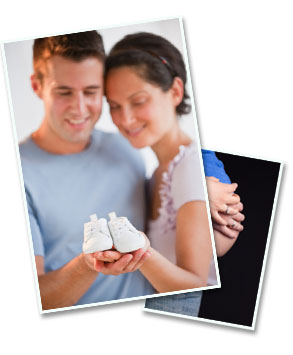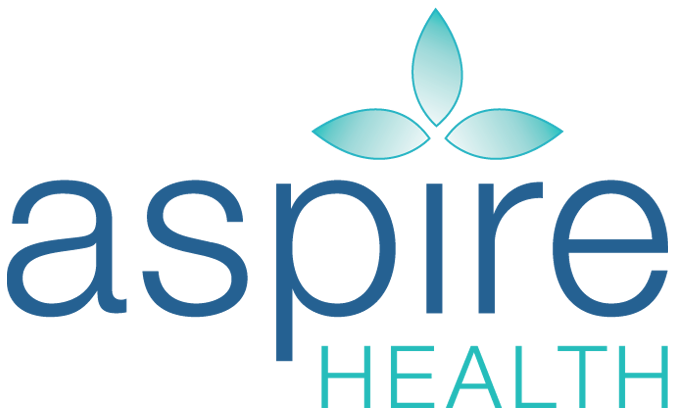
The following articles review how acupuncture can be useful in promoting female fertility:
Fertil Steril. 2002 Apr;77(4):721-4.
Influence of acupuncture on the pregnancy rate in patients who undergo assisted reproduction therapy.
Paulus WE, Zhang M, Strehler E, El-Danasouri I, Sterzik K.
Department of Reproductive Medicine, Christian-Lauritzen-Institut, Ulm, Germany. paulus@reprotox.de
Abstract
OBJECTIVE: To evaluate the effect of acupuncture on the pregnancy rate in assisted reproduction therapy (ART) by comparing a group of patients receiving acupuncture treatment shortly before and after embryo transfer with a control group receiving no acupuncture.
DESIGN: Prospective randomized study.
SETTING: Fertility center.
PATIENT(S): After giving informed consent, 160 patients who were undergoing ART and who had good quality embryos were divided into the following two groups through random selection: embryo transfer with acupuncture (n = 80) and embryo transfer without acupuncture (n = 80).
INTERVENTION(S): Acupuncture was performed in 80 patients 25 minutes before and after embryo transfer. In the control group, embryos were transferred without any supportive therapy.
MAIN OUTCOME MEASURE(S): Clinical pregnancy was defined as the presence of a fetal sac during an ultrasound examination 6 weeks after embryo transfer.
RESULT(S): Clinical pregnancies were documented in 34 of 80 patients (42.5%) in the acupuncture group, whereas pregnancy rate was only 26.3% (21 out of 80 patients) in the control group.
CONCLUSION(S): Acupuncture seems to be a useful tool for improving pregnancy rate after ART.
PMID: 11937123 [PubMed – indexed for MEDLINE]
Complement Ther Clin Pract. 2010 Aug;16(3):154-7. Epub 2009 Dec 24.
The relationship between perceived stress, acupuncture, and pregnancy rates among IVF patients: a pilot study.
Balk J, Catov J, Horn B, Gecsi K, Wakim A.
University of Pittsburgh, Magee-Womens Hospital, 300 Halket Street, Pittsburgh, PA 15213, USA. jbalk@magee.edu
Abstract
The aim of this paper was to determine the effect of acupuncture on perceived stress levels in women on the day of embryo transfer (ET), and to determine if perceived stress levels at embryo transfer correlated with pregnancy rates. The study was an observational, prospective, cohort study based at the University IVF center.
PATIENT(S): 57 infertile patients undergoing IVF or IVF/ICSI. INTERVENTIONS(S): Patients were undergoing Embryo Transfer with or without acupuncture as part of their standard clinical care.
MAIN OUTCOME MEASURE(S): Perceive Stress Scale scores, pregnancy rates.
RESULT(S): women who received this acupuncture regimen achieved pregnancy 64.7%, whereas those without acupuncture achieved pregnancy 42.5%. When stratified by donor recipient status, only non-donor recipients potentially had an improvement with acupuncture (35.5% without acupuncture vs. 55.6% with acupuncture). Those who received this acupuncture regimen had lower stress scores both pre-ET and post-ET compared to those who did not. Those with decreased their perceived stress scores compared to baseline had higher pregnancy rates than those who did not demonstrate this decrease, regardless of acupuncture status.
CONCLUSIONS(S): The acupuncture regimen was associated with less stress both before and after embryo transfer, and it possibly improved pregnancy rates. Lower perceived stress at the time of embryo transfer may play a role in an improved pregnancy rate.
Fertil Steril. 2009 Dec;92(6):1870-9. Epub 2008 Dec 31.
Changes in serum cortisol and prolactin associated with acupuncture during controlled ovarian hyperstimulation in women undergoing in vitro fertilization-embryo transfer treatment.
Magarelli PC, Cridennda DK, Cohen M.
Reproductive Medicine and Fertility Centers, Colorado Springs, Colorado 80910, USA. info@475-baby.com
Abstract
OBJECTIVE: To determine whether changes in serum cortisol (CORT) and PRL are affected by acupuncture (Ac) in Ac-treated IVF patients.
DESIGN: Prospective cohort clinical study.
SETTING: Private practice reproductive endocrinology and infertility clinic and private practice acupuncture consortium.
PATIENT(S): Sixty-seven reproductive-age infertile women undergoing IVF.
INTERVENTION(S): Blood samples were obtained from all consenting new infertility patients and serum CORT and serum PRL were obtained prospectively. Patients were grouped as controls (IVF with no Ac) and treated (IVF with Ac) according to acupuncture protocols derived from randomized controlled trials.
MAIN OUTCOME MEASURE(S): Serum levels of CORT and PRL were measured and synchronized with medication stimulation days of the IVF cycle (e.g., day 2 of stimulation, day 3, etc.). Reproductive outcomes were collected according to Society for Assisted Reproductive Technology protocols, and results were compared between controls and those patients treated with Ac.
RESULT(S): CORT levels in Ac group were significantly higher on IVF medication days 7, 8, 9, 11, 12, and 13 compared with controls. PRL levels in the Ac group were significantly higher on IVF medication days 5, 6, 7, and 8 compared with controls.
CONCLUSION(S): In this study, there appears to be a beneficial regulation of CORT and PRL in the Ac group during the medication phase of the IVF treatment with a trend toward more normal fertile cycle dynamics.
Chinese Acupuncture and Moxibustion 2003-01
Effect of acupuncture on the pregnancy rate in embryo transfer and mechanisms: A randomized and control study
Zhang Mingmin , Huang Guangying, LuFu’er, et al.
(Affiliated Tongji Hospital, Tongji Medical College, Huazhong University of Science & Technology, Hubei Wuhan 430030, China)
OBJECTIVE: To observe the effect of acupuncture on the pregnancy rate in assisted reproduction therapy such as in-vitro-fertilisation (IVF) and intracytoplasmatic spermatozoen injection (ICSI), and mechanisms.
METHODS: 210 cases undergoing IVF or ICSI were divided randomly into three groups: acupuncture treatment group, placebo group and control group. The acupuncture treatment group and the placebo group were treated respectively with body acupuncture and placebo acupuncture before and after embryo transfer, and in the control group embryos were transferred without any supportive therapy. Contraction frequency of the uterine junctional zone and the pregnancy rate were observed.
RESULTS: The contraction frequency before embryo transfer was not significantly different among the three groups, but after embryo transfer in the acupuncture treatment group was lower than that in the placebo group and the control group, respectively. The pregnancy rate was 44.3% (31/70) in the acupuncture treatment group, and 27.1% (19/70) in the placebo group and 24.3% (17/70) in the control group. The pregnancy rate in the acupuncture treatment group was significantly higher than that in the placebo acupuncture group and the control group (P0.05).
CONCLUSION: Acupuncture is a powerful tool for improving pregnancy rate
after assisted reproduction therapy.
BMJ. 2008 Mar 8;336(7643):545-9. Epub 2008 Feb 7.
Effects of acupuncture on rates of pregnancy and live birth among women undergoing in vitro fertilisation: systematic review and meta-analysis.
Manheimer E, Zhang G, Udoff L, Haramati A, Langenberg P, Berman BM, Bouter LM.
Center for Integrative Medicine, University of Maryland School of Medicine, 2200 Kernan Drive, Kernan Hospital Mansion, Baltimore, MD 21207, USA. emanheimer@compmed.umm.edu
Abstract
OBJECTIVE: To evaluate whether acupuncture improves rates of pregnancy and live birth when used as an adjuvant treatment to embryo transfer in women undergoing in vitro fertilisation.
DESIGN: Systematic review and meta-analysis.
DATA SOURCES: Medline, Cochrane Central, Embase, Chinese Biomedical Database, hand searched abstracts, and reference lists. Review methods Eligible studies were randomised controlled trials that compared needle acupuncture administered within one day of embryo transfer with sham acupuncture or no adjuvant treatment, with reported outcomes of at least one of clinical pregnancy, ongoing pregnancy, or live birth. Two reviewers independently agreed on eligibility; assessed methodological quality; and extracted outcome data. For all trials, investigators contributed additional data not included in the original publication (such as live births). Meta-analyses included all randomised patients.
DATA SYNTHESIS: Seven trials with 1366 women undergoing in vitro fertilisation were included in the meta-analyses. There was little clinical heterogeneity. Trials with sham acupuncture and no adjuvant treatment as controls were pooled for the primary analysis. Complementing the embryo transfer process with acupuncture was associated with significant and clinically relevant improvements in clinical pregnancy (odds ratio 1.65, 95% confidence interval 1.27 to 2.14; number needed to treat (NNT) 10 (7 to 17); seven trials), ongoing pregnancy (1.87, 1.40 to 2.49; NNT 9 (6 to 15); five trials), and live birth (1.91, 1.39 to 2.64; NNT 9 (6 to 17); four trials). Because we were unable to obtain outcome data on live births for three of the included trials, the pooled odds ratio for clinical pregnancy more accurately represents the true combined effect from these trials rather than the odds ratio for live birth. The results were robust to sensitivity analyses on study validity variables. A prespecified subgroup analysis restricted to the three trials with the higher rates of clinical pregnancy in the control group, however, suggested a smaller non-significant benefit of acupuncture (odds ratio 1.24, 0.86 to 1.77).
CONCLUSIONS: Current preliminary evidence suggests that acupuncture given with embryo transfer improves rates of pregnancy and live birth among women undergoing in vitro fertilisation.
PMID: 18258932 [PubMed – indexed for MEDLINE]
Fertil Steril. 2006 May;85(5):1347-51. Epub 2006 Apr 17.
Effect of acupuncture on the outcome of in vitro fertilization and intracytoplasmic sperm injection: a randomized, prospective, controlled clinical study.
Dieterle S, Ying G, Hatzmann W, Neuer A.
Division of Reproductive Endocrinology and Infertility, Department of Obstetrics and Gynecology, University of Witten/Herdecke, Dortmund, Germany. Dieterle@IVF-Dortmund.de
Abstract
OBJECTIVE: To determine the effect of luteal-phase acupuncture on the outcome of IVF/intracytoplasmic sperm injection (ICSI).
DESIGN: Randomized, prospective, controlled clinical study.
SETTING: University IVF center.
PATIENT(S): Two hundred twenty-five infertile patients undergoing IVF/ICSI.
INTERVENTION(S): In group I, 116 patients received luteal-phase acupuncture according to the principles of traditional Chinese medicine. In group II, 109 patients received placebo acupuncture.
MAIN OUTCOME MEASURE(S): Clinical and ongoing pregnancy rates.
RESULT(S): In group I, the clinical pregnancy rate and ongoing pregnancy rate (33.6% and 28.4%, respectively) were significantly higher than in group II (15.6% and 13.8%).
CONCLUSION(S): Luteal-phase acupuncture has a positive effect on the outcome of IVF/ICSI.
PMID: 16616748 [PubMed – indexed for MEDLINE]
